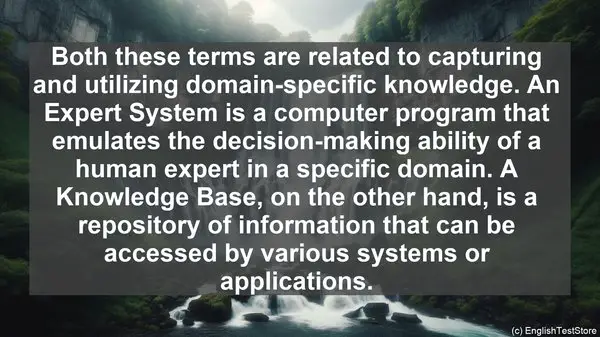Introduction
Welcome to today’s lesson. As you delve deeper into the world of Artificial Intelligence, you’ll come across numerous terms that might seem similar but have distinct meanings. In this lesson, we’ll unravel the top 10 commonly confused words in AI, ensuring that you don’t mix them up in your future studies or discussions.

1. Artificial Intelligence vs. Machine Learning
Often used interchangeably, these two terms have different scopes. Artificial Intelligence refers to the broader concept of machines performing tasks that typically require human intelligence. On the other hand, Machine Learning is a subset of AI that focuses on algorithms and statistical models, enabling systems to learn and improve from data without explicit programming.

2. Deep Learning vs. Machine Learning
While Machine Learning involves algorithms and statistical models, Deep Learning takes it a step further. It’s a subset of Machine Learning that utilizes artificial neural networks, mimicking the human brain’s structure. Deep Learning is particularly effective in tasks like image and speech recognition.
3. Automation vs. Artificial Intelligence
Though related, these terms have different implications. Automation refers to the process of using technology to perform tasks with minimal human intervention. Artificial Intelligence, on the other hand, encompasses the broader concept of machines exhibiting human-like intelligence, which may or may not involve automation.
4. Algorithm vs. Model
In the realm of AI, algorithms and models are fundamental. An algorithm is a step-by-step procedure or set of rules for solving a problem. A model, on the other hand, is a representation of a system or a concept. It can be created using algorithms and can be used to make predictions or decisions.
5. Natural Language Processing vs. Natural Language Understanding
Both these terms deal with language-related AI tasks. Natural Language Processing involves the interaction between computers and human language, encompassing tasks like language generation and translation. Natural Language Understanding, on the other hand, focuses on the system’s ability to comprehend and interpret human language.
6. Supervised Learning vs. Unsupervised Learning
These are two primary types of Machine Learning. Supervised Learning involves training a model using labeled data, where the desired output is known. Unsupervised Learning, on the other hand, deals with unlabeled data, where the model learns patterns and relationships on its own.
7. Bias vs. Variance
In Machine Learning, bias refers to the error introduced by approximating a real-world problem with a simplified model. Variance, on the other hand, refers to the model’s sensitivity to fluctuations in the training data. Balancing bias and variance is crucial for building robust models.
8. Data Mining vs. Data Analytics
Both these terms deal with extracting insights from data, but they differ in their approaches. Data Mining involves discovering patterns and relationships in large datasets, often using Machine Learning techniques. Data Analytics, on the other hand, focuses on interpreting and communicating the insights derived from the data.
9. Expert System vs. Knowledge Base
Both these terms are related to capturing and utilizing domain-specific knowledge. An Expert System is a computer program that emulates the decision-making ability of a human expert in a specific domain. A Knowledge Base, on the other hand, is a repository of information that can be accessed by various systems or applications.
10. Neural Network vs. Artificial Neural Network
While both these terms deal with interconnected nodes, there’s a subtle difference. A Neural Network refers to a system of interconnected nodes or units, which can be biological or artificial. An Artificial Neural Network specifically refers to a computational model inspired by the biological neural networks.
